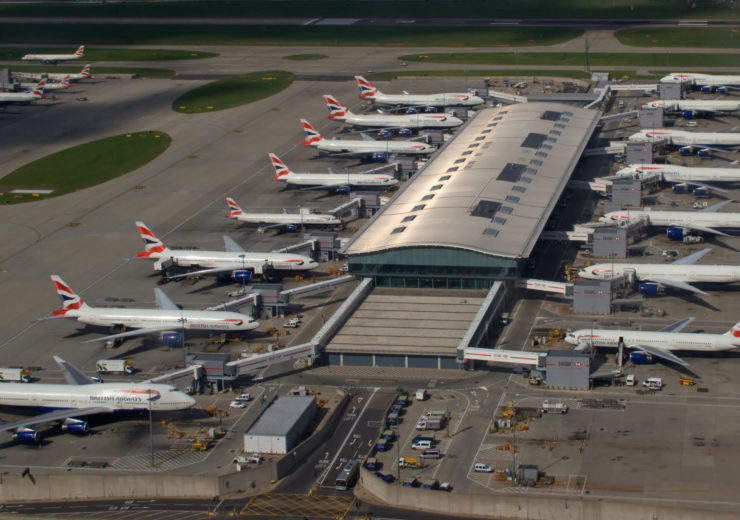Following approval of its third runway earlier this year, Heathrow plans to achieve carbon neutrality in order to compensate for the predicted rise in flight numbers

Heathrow Airport
After its third runway is complete, Heathrow Airport is planning to mitigate the emissions caused by the anticipated increase in flights by achieving carbon neutrality and becoming an “international climate action leader”.
The UK’s largest airport’s vision of a new £14bn runway drew the ire of environmentalists, who believe the predicted rise in air traffic will pollute the country, when it was given the go ahead by government earlier this year.
Its new plan, however, published today, sets out a number of contingencies to reduce CO2 emissions, incentivise electric flights and help the aviation sector contribute more meaningfully to the UK’s goal of cutting carbon dioxide levels by 80% from 1990 levels by 2050.
Heathrow chief executive John Holland-Kaye said: “Climate change is the biggest challenge facing our generation. But it is not aviation that’s the enemy – it is carbon.
“We are committed to taking the lead to deliver carbon neutral growth in aviation, and the plan we launch today sets out the roadmap to get there.”
Heathrow third runway update: The details
The aviation sector currently accounts for roughly 2% of global carbon dioxide emissions, with experts predicting this to rise as flight numbers increase.
With the announcement of its new plan, Heathrow has said it plans to be an international leader on climate action.
A key part of this will be its introduction of free landing fees for one year for the first commercially viable electric aircraft to be developed, with plans to review the infrastructure requirements for electric charging stations at the airport also in the works.

The airport will also attempt to promote the increased use of sustainable fuels in the industry, by providing support for relevant pilot projects and lobbying the International Civil Aviation Organization to do the same.
Additionally, Heathrow has outlined plans to overhaul its airspace and ground operations in a bid to modernise them and reduce their emissions.
It aims to realise this goal via a number of measures including increasing the availability of power sources while reducing the use of combustion engines.
Building on this, the airport will invest in UK peatland restoration, claiming it could become one of the most cost-effective methods of carbon offsetting.
Lastly, Heathrow said it plans to lobby the UK government to urge ICAO and its other member states to create a statutory 2050 climate emissions target specifically for the global aviation sector.
Environmentalist case against third runway
Before the announcement of its new plan, the proposed Heathrow expansion was set to vastly undermine the UK’s climate change goals.
Existing UK legislation states the government is committed to cut carbon dioxide levels by 80% of 1990 levels in 2050.
As of 2016, aviation accounts for about 6% of UK emissions – half of which comes from Heathrow.
To meet the legislated target, the sector would have to reduce its emissions to below the 2005 level – which will only be made more difficult with additional capacity.
The airport’s newly published initiative promises to counter this – only time will tell if it can.


